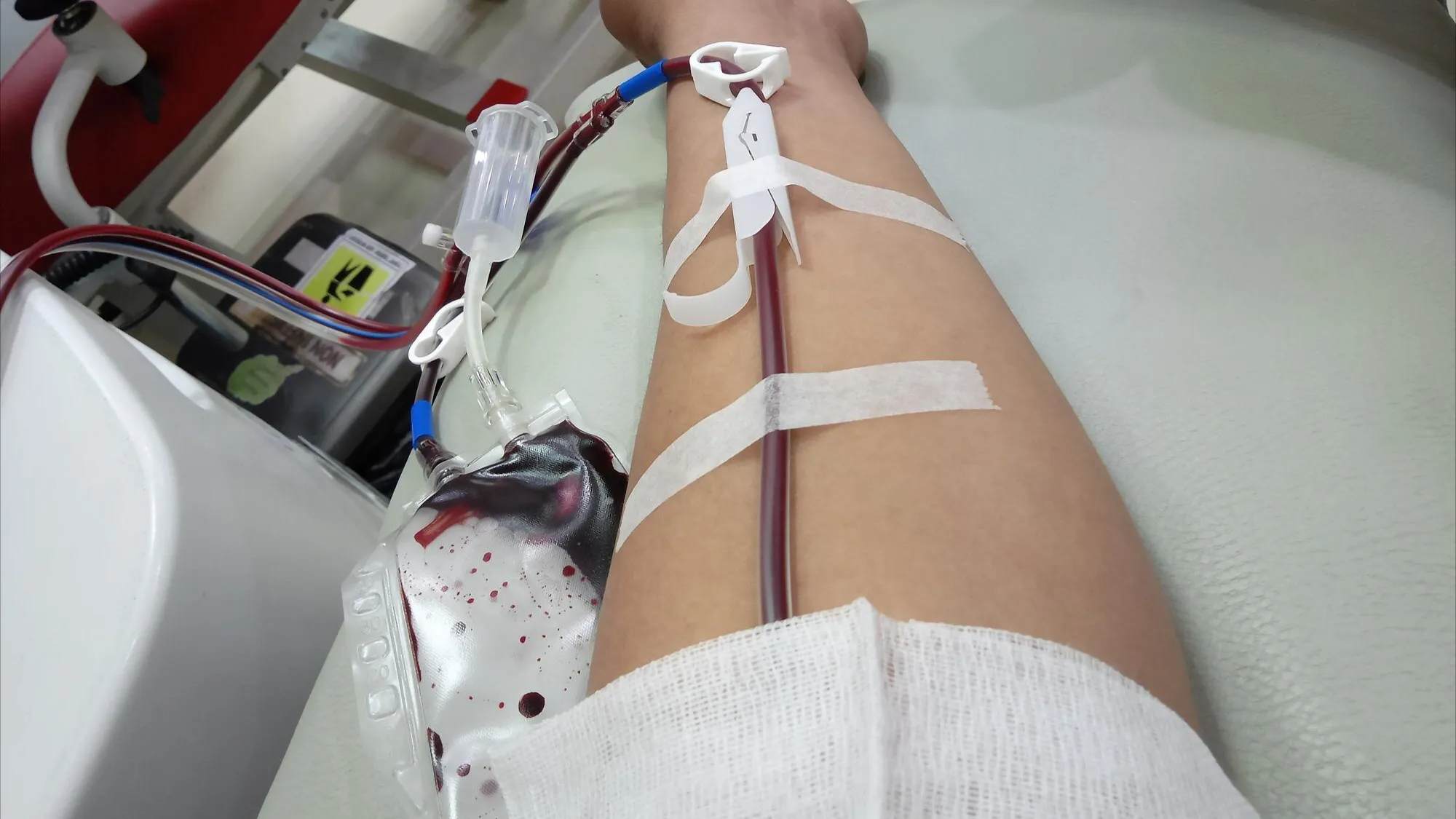
When the kidneys fail to function properly; dialysis becomes a life-saving procedure. However, successful dialysis depends on a reliable access point that can handle repeated treatments. This is where a dialysis fistula plays an important role. A dialysis fistula is a surgically created connection between an artery and a vein, most commonly in the arm, to facilitate effective and long-term hemodialysis.
In Ahmedabad, Dr. Aakash Patel, a trusted name in interventional radiology, offers expert evaluation and treatment of dialysis fistula disease. In this, we’ll explore what a dialysis fistula is, how it works, what symptoms may indicate problems, how the disease is diagnosed, and what treatment options are available. We’ll also highlight the expert care provided by Dr. Aakash Patel in dialysis fistula treatment in Ahmedabad.
What is a Dialysis Fistula?
A dialysis fistula is a type of vascular access used in hemodialysis. It involves surgically connecting an artery to a vein, usually in the forearm or upper arm. This connection allows the vein to grow stronger and larger due to increased blood flow, making it suitable for frequent needle insertions during dialysis.
Compared to other forms of access like catheters or grafts, dialysis fistulas are considered the gold standard because they last longer and have fewer complications such as infections or clotting. Most importantly, they provide consistent and high-quality dialysis. However, like any surgical intervention, fistulas can develop issues over time. When a patient begins to experience problems, it may indicate dialysis fistula disease.
What Is Dialysis Fistula Disease?
Dialysis fistula disease refers to any dysfunction or abnormality in the fistula that may impair its performance. This may include narrowing (stenosis), clotting (thrombosis), infection, or inadequate blood flow. Over time, these issues can lead to poor dialysis efficiency and may put a patient at serious risk if not diagnosed and treated promptly. Some patients may develop fistula complications shortly after surgery, while others may face challenges after months or years of dialysis.
That’s why it is crucial to monitor the symptoms of dialysis fistula and seek medical attention if any abnormalities are noticed.
Common Symptoms of Dialysis Fistula Disease
Recognizing the early symptoms of dialysis fistula disease can help prevent serious complications. Here are some signs that may indicate a problem:
- Swelling or Bulging Vein: Excessive swelling or bulging in the fistula area could indicate a clot or poor blood flow.
- Pain at the Access Site: Mild discomfort is normal, but persistent or worsening pain may signal an infection or blockage.
- Decreased Thrill or Bruit: A dialysis fistula should produce a vibration (thrill) or whooshing sound (bruit). If either is absent, the fistula may be blocked.
- Coldness or Color Change in the Arm: Poor blood flow from a malfunctioning fistula may cause the limb to feel cold or turn pale/blue.
- Prolonged Bleeding After Dialysis: If bleeding continues longer than normal after removing the dialysis needle, it could indicate a problem with the fistula wall or clotting.
Causes of Dialysis Fistula Disease
There are multiple reasons why a dialysis fistula might stop functioning effectively:
- Stenosis: Narrowing of the blood vessels reduces blood flow.
- Thrombosis: Clotting can completely block the fistula.
- Infection: Bacteria may enter through the skin or the bloodstream.
- Repeated Trauma: Frequent needle punctures weaken the vein wall.
- High Venous Pressure: Improper blood drainage affects circulation.
These causes are often preventable with proper care and routine check-ups with a specialist like Dr. Aakash Patel.
How Dialysis Fistula Disease Is Diagnosed
Diagnosing dialysis fistula disease involves a physical examination and the use of advanced imaging techniques. Dr. Aakash Patel uses:
- Ultrasound Evaluation: Ultrasound helps visualize blood flow and detect any narrowing or clots in the vein.
- Fistulogram: This is an X-ray test that uses contrast dye to detect blockages or other problems inside the fistula.
- Clinical Assessment: Dr. Aakash Patel carefully assesses the symptoms of dialysis fistula, including checking for thrill and bruit, swelling, and changes in arm function.
Early detection allows for timely intervention and can significantly reduce the risk of complete fistula failure.
Dialysis Fistula Treatment in Ahmedabad by Dr. Aakash Patel
If you're experiencing symptoms or complications with your dialysis access, dialysis fistula treatment in Ahmedabad is available with Dr. Aakash Patel. He offers minimally invasive solutions that restore fistula function with minimal downtime.
Treatment Options Include:
- Angioplasty: A balloon is used to widen narrowed veins and restore blood flow.
- Thrombectomy: Removal of blood clots from the fistula.
- Stent Placement: A small mesh tube is inserted to keep the vein open.
- Fistula Revision: In some cases, a minor surgical revision is needed.
- Catheter Insertion (Temporary): In emergencies, a temporary dialysis catheter may be used.
Dr. Patel’s expertise and use of cutting-edge techniques make him a leading choice for dialysis fistula treatment in Ahmedabad.
How to Care for Your Dialysis Fistula
Caring for your dialysis fistula daily can extend its life and prevent complications:
- Keep the site clean and dry
- Avoid sleeping on the arm with the fistula
- Do not carry heavy items using the fistula arm
- Regularly check for thrill or bruit
- Report any signs of infection or blockage immediately
Patients who follow a strict care routine and stay in touch with their doctor experience fewer issues with their fistula over time.
Why Choose Us
At our advanced interventional radiology center in Ahmedabad, we are dedicated to offering specialized and comprehensive care for patients with dialysis fistula disease. Under the expert guidance of Dr. Aakash Patel, we provide state-of-the-art diagnosis, personalized treatment plans, and post-treatment care to support each patient’s journey. Dr. Patel's vast experience in treating vascular access issues using minimally invasive techniques makes him a trusted expert in the field. With a patient-centric approach and focus on clinical excellence, we strive to improve every patient’s quality of life and dialysis experience.
Conclusion
A dialysis fistula is an important component for patients undergoing hemodialysis. Recognizing the early symptoms of dialysis fistula disease, such as swelling, pain, or reduced blood flow, can prevent complications and help maintain access for life-saving treatment. Thanks to the expert care of Dr. Aakash Patel, patients in Ahmedabad can access advanced and effective dialysis fistula treatment that prioritizes comfort and results. Whether you’re newly diagnosed or have been on dialysis for years, proactive care and expert intervention make a significant difference.
For more information on Dialysis Fistula Disease: What It Is and Its Symptoms or to book a consultation with Dr. Aakash Patel, please call us at +91 9586961070 or Book Your Appointment today . Your health deserves the best care.



